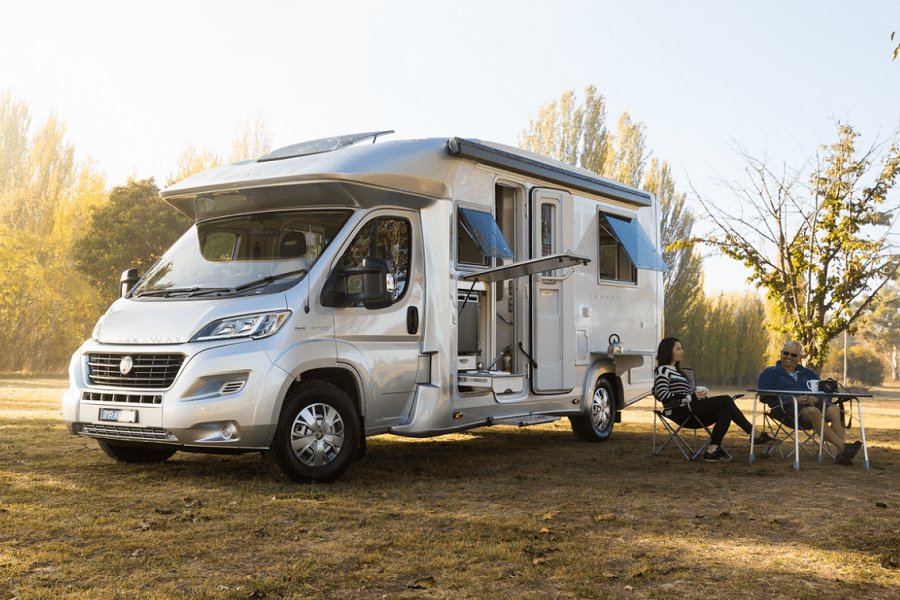For a seemingly simple part of RV ownership, there sure is a lot that goes into keeping your bathroom clean.
The toilet compartment of any RV requires a lot of attention to run hygienically and comfortably, so applying regular treatment is essential, no matter what type of setup you have.
What is RV toilet treatment and how does it work? RV toilet treatment is a product used in the holding or black water tank of an RV and it’s added after cleaning and before you start using the toilet.
The chemicals in the treatment actively work at breaking down waste and toilet paper as well as reducing odors that come from the tank.
A toilet treatment is essential for any type of journey, no matter how often you plan on using your RV’s amenities or how many people are traveling with your group.
We’ll help you determine the type of toilet treatments your RV needs and how to apply them for the best results, so you don’t have to give a second thought to this non-glamorous part of RV living when you’re on the move.
Contents
What is RV Toilet Treatment?
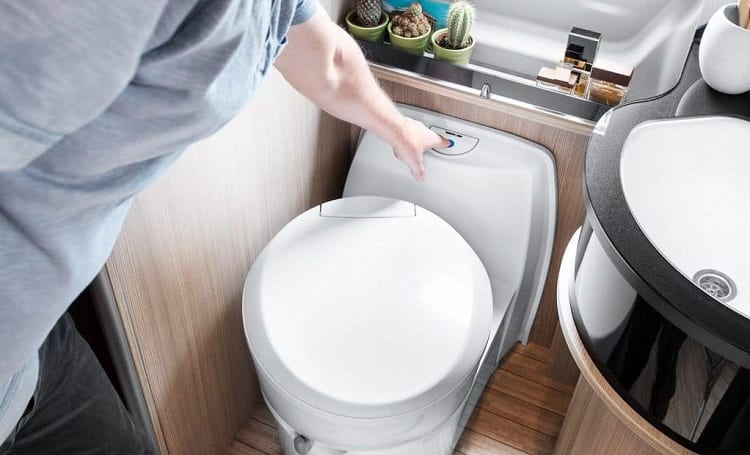
A toilet treatment is a specific additive that’s added to one or more parts of the bathroom setup in an RV.
This can include treatments that are placed in the black water tank, the toilet bowl, or the flushing water tank, each with a dedicated purpose.
In the scope of cleaning and maintaining an RV, toilet treatments are an essential product.
While it is possible to come up with DIY solutions and create homemade solutions with mixtures of bleach and water or other alternatives, the best approach is to find a toilet treatment product made for the unique requirements of motorhomes and campers.
The differences between an RV toilet and your standard toilet at home make it important to clean and maintain all of the parts regularly.
As you don’t have a plumbing system in place to carry the waste away, you’ll need to treat both the waste and flushing water with the right balance of chemicals to do the job for you.
What Does Toilet Treatment Do?
The main purpose of RV toilet treatment is to make it easier for the waste and water to be processed and eventually dumped at the waste station.
When using a black water tank in the RV, everything that goes through the toilet ends up there, and when it’s time to empty it, it needs to be fed back through a hose and into the vessel that collects the waste.
While this sounds easy enough, it’s common for clogs and blockages to occur.
With the right treatment, you’ll be including active ingredients and bacteria and enzyme compositions directly into the holding tank that breaks down everything from fecal matter to toilet tissue.
This means that whatever travels through the sewer hose will do so more easily, which is less work for you.
Along with being necessary for breaking down waste, these toilet treatments can also provide some level of odor control.
As you’re traveling in a portable home where the waste container is being moved frequently and you’re close to the bathroom itself, anything you can do to reduce the smell will be a lifesaver.
Some people go a step further and use a flush tank additive or treatment as well.
The role of these products is to provide a pleasant fragrance, help everything to flush more easily, and add more active ingredients that help to break down waste, just as the toilet treatment in the black water tank does.
They can be sprayed directly into the flush tank for immediate results.
Key Features to Consider
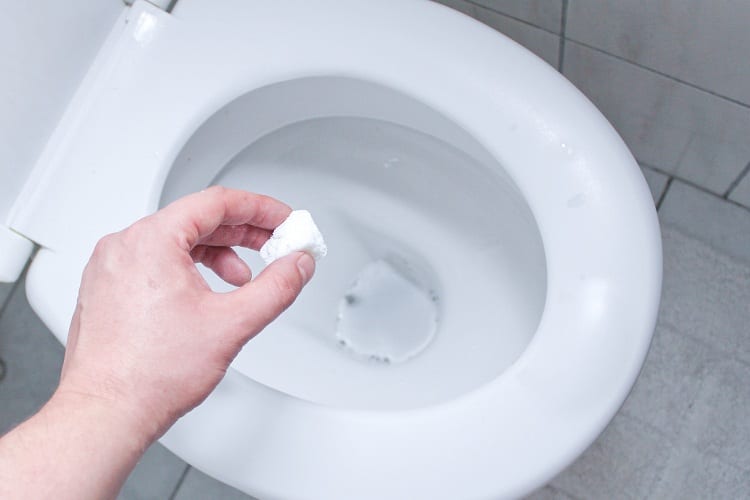
One look at the market for RV toilet treatments and chemicals will show you just how many choices are out there.
You’ll want to be certain that whatever treatment you choose is easy to use, will get the desired outcome, and features the right chemicals.
Here are some features to weigh up when choosing an RV toilet treatment:
Ingredients
Using a portable or RV toilet means being extra careful about what goes into it, as it’ll inevitably have to come back again.
You should avoid products that aren’t biodegradable and other chemicals and biocides that disrupt septic systems by killing all of the bacteria, good or bad.
If you’re not sure what to look for, try to choose products only labeled as suitable for RV and portable toilet use, or those with a ‘septic safe’ guarantee.
Otherwise, it’s best to avoid anything you’re unsure about and steer clear of home remedies that you don’t understand.
Type of treatment
The two main types of toilet treatment are a drop-in tablet that dissolves in the water of the tank or a liquid that can be poured in.
Both of these types are inserted into the RV toilet and carried through to the tank so there’s minimal fuss but the drop-in is usually the easier method.
Size
Although buying in bulk is the best way to save money, it might not be ideal for the shortage of space in your RV. Look first at where you’ll keep them and then figure out what size is best.
Make sure the dosage of the toilet treatment is sufficient for the size of the tank, as well.
Storage
Whatever products you choose for your toilet, make sure they’re easily stored.
The movement of the RV and unforgiving temperatures in some conditions can cause a problem so make sure it’s able to be stored safely and neatly away in an upright position when you travel.
Step by Step Guide to Toilet Treatment
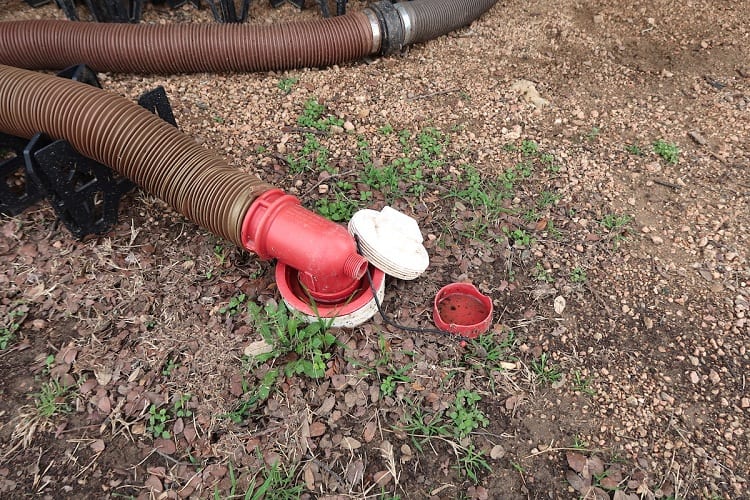
Adding a treatment to your RV toilet is incredibly easy, especially when you buy a dedicated drop-in or liquid treatment.
This part of the process should be done during the emptying stage when you’re depositing waste at the dump station and after it’s been cleaned.
Follow these easy steps to keep your RV toilet clean and odor-free on your travels.
- Dump the contents of the RV’s black water tank into the dedicated waste station. Clean, rinse, dry, and sanitize the black water tank of your RV as usual.
- Add a few gallons of fresh water to your black water tank before adding any kind of treatment or chemical, or before using it at all.
- Hook the tank back up to your RV and make sure the outside has been sanitized as well.
- Drop the tablet or liquid chemical into the RV toilet, as per the recommended amount.
- Press the flushing valve just as you would when using the toilet and the treatment will be carried through to the black water tank.
The Easy Way to a Sparkling Toilet
Unlike the straightforward bathroom setup at home, an RV’s toilet has many working parts, all of which require your constant attention.
With the right products and a little background knowledge though, you can make this job a lot simpler, and it all starts with the right toilet treatments to keep everything sparkling and clean.
Related Questions
Traveling around in an RV might sound like a great adventure but there’s still a lot of housekeeping you have to tend to.
Toilet treatments are one part of RV life that’s essential to a comfortable and safe adventure on the road, so read on to see the answers to some commonly asked questions that can help you learn more about them.
Can You Put a Regular Toilet in an RV?
Regular household toilets are not designed for RV use and they should not be installed.
These toilets are built to work with the plumbing inside of a house and their size and construction aren’t going to suit the inside of an RV bathroom, nor will they be able to handle the constant movement as the vehicle drives.
Why Does My RV Toilet Stink?
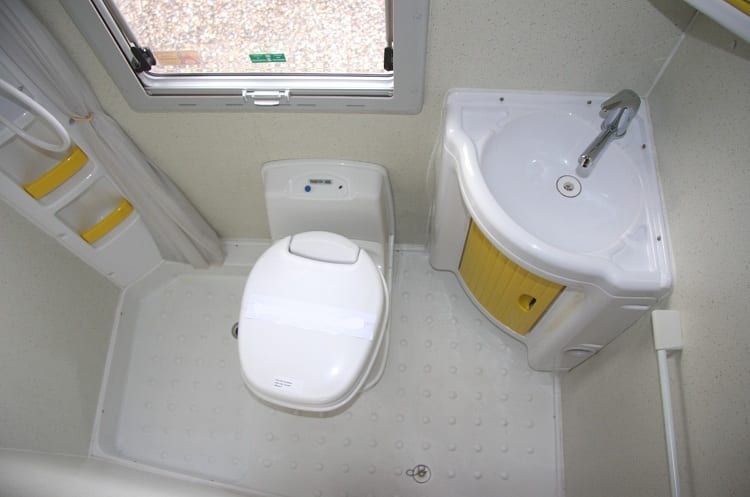
The most common cause for RV toilet odor is the black water tank and its proximity to your living quarters.
These tanks are susceptible to the build-up of waste and toilet paper and will need to be cleaned and sanitized thoroughly.
If you’ve checked the toilet and holding tank and found no odors, the most obvious solution is to clean out the black water tank to remove the smell.
Can I Use Charmin in RV Toilet?
The Charmin brand of toilet paper does make some varieties that are compatible with RV toilets but you should always check the packaging to be sure.
The best options for RV toilet paper are those that are marked as septic tank safe and bio-degradable as they’ll be able to break down easily and won’t do any harm to the sewer system.
Resources:

